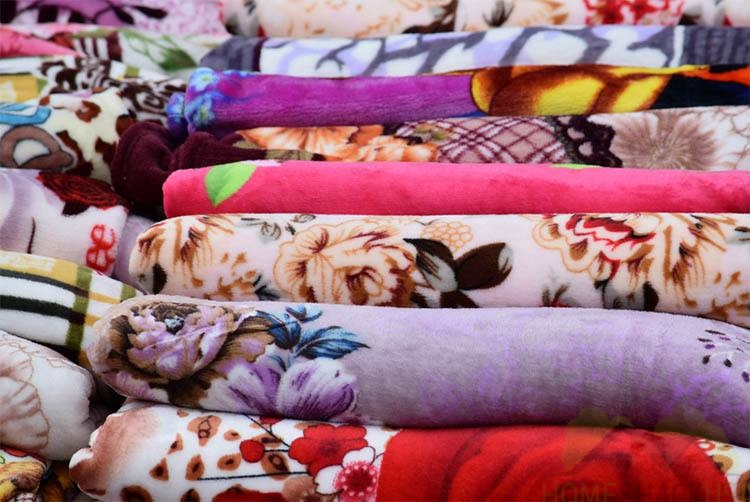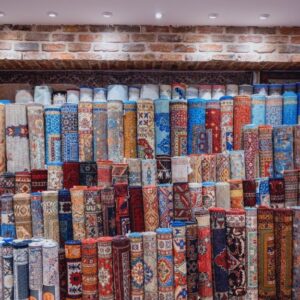Are you looking to add a touch of comfort and style to your living space? Throw blankets are a fantastic way to bring warmth, color, and personality to any room.
Whether you’ve stumbled upon throw blankets online, heard about them from a friend, or simply want to explore your options, you’re in the right place. In this guide, we’re diving into the top 10 most popular (and some unique) throw blanket materials, highlighting their benefits and helping you choose the best fit for your needs.
We’ll also cover key details like softness, skin compatibility, and allergen levels so you can make an informed choice. Get ready to discover which throw blanket will be your next favorite cozy companion.
From most common to least common – simple throw blanket choices
We’ve looked at different blanket material types for blankets, weighted variants, duvet covers, pillows and so on and it finally came down to our selection of throw blankets. A simple explanation of what a throw blanket is – it’s a small blanket which is usually (50 by 60 inches) placed on top of chairs, at the end of a bed, on the couch or at the foot of a futon.
They can be entirely decorative or can serve the purpose of a lightweight knee blanket to keep you warm while working or watching a movie. It’s traditionally small enough (127cm by 152,4cm) to be comfortably used casually, but not heavy enough to be an inconvenience.
Depending on the blanket material types, its color and make (woven, crocket, hand stitched or machine made) a throw blanket can be a wonderful accent even on a wall. Usually they are soft, cuddly and quite warm, making them a wonderful companion for a cold winter evening.
1. Crochet Kashmir
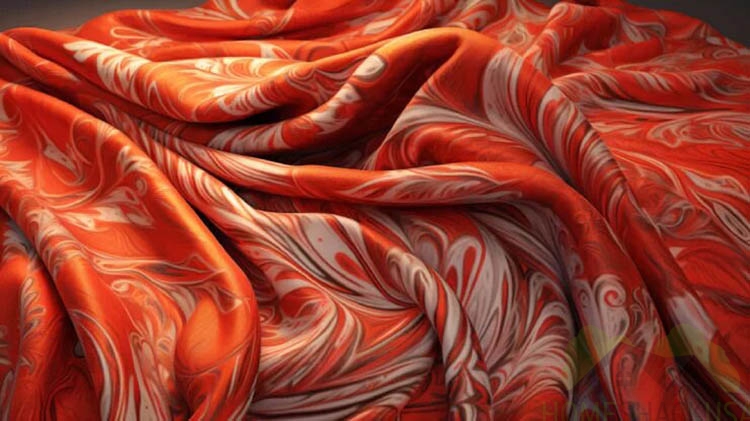 Crocheting is an old method of creating clothing, blankets and even satchels and drying sacks. Back in the day this was a very popular method of making the necessary clothing, since the only thing that was required was yarn and a crochet needle.
Crocheting is an old method of creating clothing, blankets and even satchels and drying sacks. Back in the day this was a very popular method of making the necessary clothing, since the only thing that was required was yarn and a crochet needle.
Depending on the technique used, it’s possible to create some amazing patterns, though the more complex they are the more they will cost.
This is a fantastic choice for creating a cozy, warm blanket for yourself or a family member, with the added bonus of carrying the satisfaction of you creating it on your own.
We’ve chosen Kashmir as a set material here because it’s quote bouncy, very soft and very warm and can provide the necessary comfort. If you sit a lot, this will be your new favorite household item.
2. Faux Fur Wolf’s Pelt
Faux fur has the added benefit of looking very genuine without requiring the sacrifice of an animal. It’s anti-allergenic and it retains heat pretty well, so it’s a fantastic choice for colder nights or just like a design accent for your bedroom. The choice of the fur type gives you the flexibility to pick and choose exactly what you’re getting.
In this instance, we chose a Wolf’s Pelt lookalike because it adds that medieval feel to it, but also provides quite a lot of softness – the length of the hairs can be quite long, though that really depends on your choice of blanket material types.
In terms of softness it’s quite soft and if we rate it for skin care – it’s a very good choice, unless you have pets with long hairs, then it might be difficult to keep up with their shedding.
3. Woolen Throw Blanket – Heirloom Quality
We constantly hear about Heirloom Items and the concept isn’t that foreign. Usually when looking for heirloom anything, you want a lasting durability which can provide the necessary longevity for an item to be considered heirloom.
Secondly you are looking for a classic, universal design and feel which will transcend the different ages and provide equal comfort and softness to each generation.
In the case of a woolen throw blanket we are pretty sure you get all in one small, soft, cuddly package. In terms of comfort, wool is a classic choice for warmth and softness, depending on the material and make, wool can also provide quite a lot of breathability.
In terms of comfort, wool is a classic choice for warmth and softness, depending on the blanket material types and make, wool can also provide quite a lot of breathability.
In terms of skin comfort, wool rates quite well with even allergy-prone individuals as it rarely has any lasting dandruff, it’s considered quite hypoallergenic. Right after this choice, you can see our selection of wool types and what their benefits are.
4. Alpaca wool
Alpacas have some of the softest, most comfortable wool in the world. Depending on the exact species you can get a short haired throw blanket, or a long haired throw blanket. Either way, alpacas are widely known for their hypoallergenic wool and we cannot recommend this wool type enough.
Among the different blanket material types, alpaca wool stands out for its exceptional softness and comfort. Some of the highest-rated clothing worn close to the skin is made from alpaca wool because it’s soft, it doesn’t itch and it can even have a cooling effect on the skin if you’re more prone to allergies and skin irritation.
5. Sheep’s wool
Sheep wool is a classic choice for any sort of blanket simply because it’s one of the warmest, natural blanket material types out there.
Natural sheep wool, when minimally treated, can be very soft and very gentle on the skin, though it really depends on the weave pattern of your choice, some designs manage to create gentle sensation that others.
Sheep’s wool is quite heavy, so this can act as a weighted throw blanket which is ideal for keeping your lower or upper half warm. The size is small enough that you can easily move it, but not bulky enough so it inconveniences your movement.
We recommend this be used in households with or without pets as it can even double as a portable pet bed, it’s very gentle for cats and small dogs, and it’s large enough for larger dog breeds.
6. Goat Wool
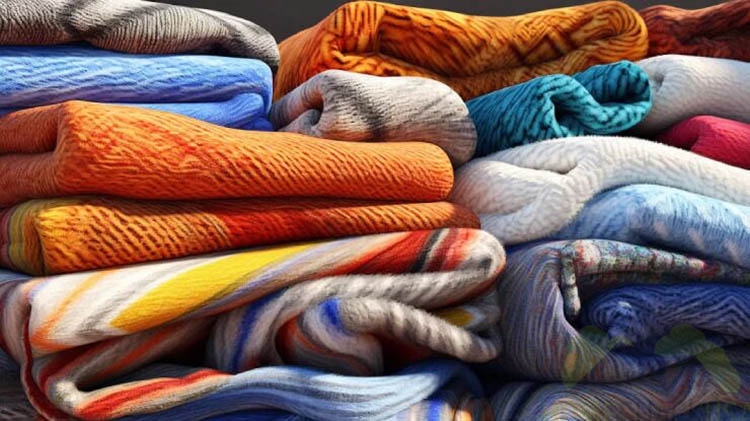 Goat wool can be quite rare and expensive, very much so like the alpaca wool. The different goat families have differentiating hair length and qualities some are straight, other’s are more akin to sheep wool, so find a species which looks cozy to you and go for a goat wool throw blanket.
Goat wool can be quite rare and expensive, very much so like the alpaca wool. The different goat families have differentiating hair length and qualities some are straight, other’s are more akin to sheep wool, so find a species which looks cozy to you and go for a goat wool throw blanket.
In regards to softness, goat’s wool is a bit rougher than alpaca wool and the weaving process might be a bit harder as the hair length cannot match sheep or alpaca hair length.
However, goat fur is far more resilient to weather than other blanket material types and it will keep you warm, the unbleached and uncolored variants have an organic, rustic feeling to them. This is a great choice for a wall accent or even an art piece and can easily serve as a bedside warmer for your feet or lower extremities.
Goat fur is hypoallergenic and is one of the gentlest materials for a soft and sensitive skin – it’s rarity makes it expensive, though we are sure you can find a bargain somewhere on the net.
7. Husky and Arctic Breed Long Hair Dog Wool
We put this as a joke, but some further investigation shows that pat husky hair products are actually quite popular among arctic bred owners. These are the dog breeds which shed a lot, like at least two times a year, creating pet hair tumbleweeds.
If you own a husky or a different arctic breed and want to make something out of it, you can send their “wool” out and have something made out of it. Huskies shed their undercoat in the spring and grow it back during late autumn and early winter – so you will have a steady supply of hairs to supplement your project.
It’s important to wash it properly before making it into yarn since some long haired breeds can suffer from dandruff if not groomed regularly.
This is a fantastic way of keeping the memory of a beloved family member alive, so if you dog is aging and you want to keep something from them, this is a very sentimental gesture. And yes, this is an actual suggestion with actual good results, it’s very soft, warm and very nice.
8. 100% Pure Cotton
The reason we haven’t mentioned cotton so far is because it’s a guaranteed choice for a throw blanket. Cotton is very springy, quite soft, it retains heat very well and it can provide quite a lot of value, even if the material is 100% pure.
The challenge with cotton blanket material types is the maintenance, since cotton can suck up quite a lot of debris, moisture, and dirt, so keeping up with its cleaning can be a challenge. Cotton lends itself to pigments quite well and it will retain them for a long time, even if a home-made dye is used to create a pattern.
The sort of weave or make of a blanket can vary greatly from manufacturer to manufacturer, so choosing a weave type which suits your preference is key to your satisfaction.
100% pure cotton can be expensive though, which makes it a very big investment for such a small item like a throw blanket, so make sure that you get something you actually like and use rather than just an accessory.
9. Silk
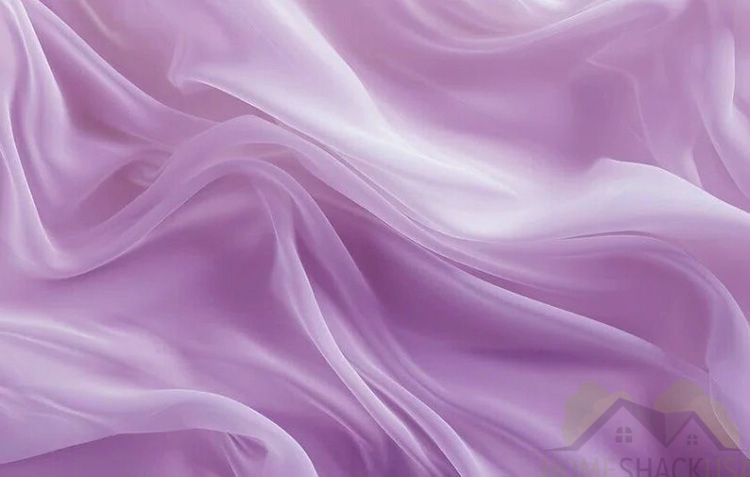 Silk is one of those blanket material types we all dream about. Its reputation for being one of the softest materials out there is very true and it provides long-lasting sensory satisfaction.
Silk is one of those blanket material types we all dream about. Its reputation for being one of the softest materials out there is very true and it provides long-lasting sensory satisfaction.
Due to the softness of the material, silk is rarely used in items which are prone to wrinkling so perhaps a silk throw blanket can be used as a decoration accent on a wall rather than an actual household item which you use.
It’s a great choice for your guest bedroom as it creates that classy feel and makes the foot of the bed an accented part of the room rather than blending it in into the environment.
Silk material maintenance can be a hassle for some households – this is not your regular throw blanket material, it’s the fancy kind where you pull out just for special occasions or your in-laws.
It has great hypoallergenic qualities and its legendary softness will provide quite a lot of comfort, though granted silk is not known for its heat retention capabilities.
10. Braided and Woven Natural Cotton
Braided blanket material types have a very rustic feeling to them. They are a classic, old-timey choice and provide a varied pattern of weaves which can enhance the atmosphere of a room.
Depending on the thickness of the yarn used in the throw blanket, it can either be placed as an accent or art, or it can be used as an actual blanket instead of a comforter.
The manufacturing process of weaving requires time and experience, which lends itself to a very different feel than a factory made throw blanket. If you have the time and skill, creating weaved or woven cotton blanket will add something entirely different to your movie nights.
From the classic to the unexpected, we’ve shared a variety of throw blanket materials for you to consider. Whether you’re drawn to the rustic charm of braided cotton, the luxurious feel of silk, or the warmth of wool, there’s something for everyone, and if you want to enrich your knowledge, take a look on top 10 blanket material types for ultimate bedroom comfort.
Adding a throw blanket to your home isn’t just about staying warm – it’s about expressing your style and creating a space that feels uniquely yours. We hope this guide has inspired you to find the perfect throw for your needs.

